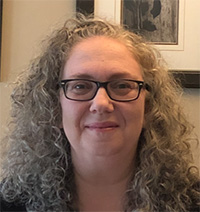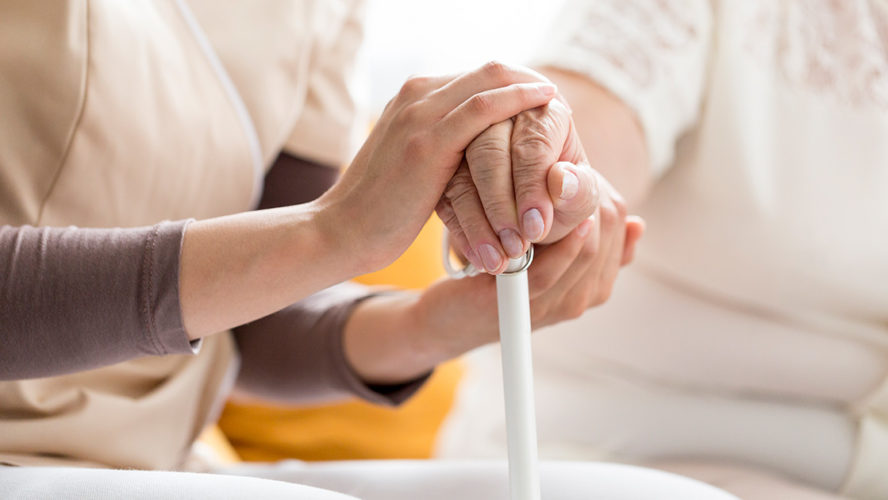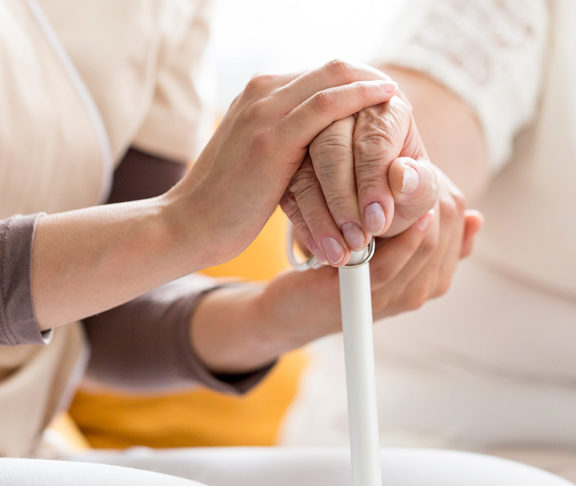
Jennifer Urosevic
President and CEO, Vision Loss Rehabilitation Canada

Irit
Daughter of Aba — Client, Vision Loss Rehabilitation Canada
Vision Loss Rehabilitation Canada provides a range of programs and services to support Canadians living with vision loss.
As Canada’s baby boomers advance toward their 80s, increasing numbers are facing challenges with their sight. The Cost of Vision Loss and Blindness in Canada, a 2021 report by Deloitte, estimates that the number of Canadians diagnosed with an eye condition that could lead to vision loss or blindness will increase to 13.8 million by 2050.
The same report notes that the total cost of vision loss in Canada in 2019 was $32.9 billion and that over half ($17.4 billion) of that cost was attributed to a reduced quality of life and loss of well-being.
“One of the things people fear most with losing their sight is losing their independence,” says Jennifer Urosevic, President and CEO of Vision Loss Rehabilitation Canada (VLRC), a non-profit health care organization that provides rehabilitation services for individuals living with blindness and vision loss.
Loss of vision doesn’t have to mean loss of independence
Aba, 94, was diagnosed with macular degeneration two decades ago, and his vision gradually deteriorated to the point where he could no longer read without a magnifier.
“As a retired academic, my dad always loved to read and learn new things, so when my sister and I noticed he was avoiding it, we raised the issue with his eye specialist at the next visit,” says Irit, Aba’s daughter.
With the help of the specialist, Aba found his way to VLRC. The family had a three-hour assessment with a VLRC specialist, who introduced Aba to visual aids to make the most of his remaining sight.
“That meeting was a game-changer,” says Irit. Now, using a closed-circuit TV (CCTV) video magnifier, among other technical aids, Aba is able to enjoy reading his books and emails again. “It’s really helped him regain his quality of life and independence,” says Irit.
Our main mission is to ensure that we’re there every step of the way to help someone experiencing vision loss navigate not only the services they require from us but also other health care services they may need.
VLRC services help people lead full, independent lives after vision loss
VLRC supports people like Irit’s dad who are dealing with acquired vision loss from aging, as well as those who were born blind or with low vision.
“Our main mission is to ensure that we’re there every step of the way to help someone experiencing vision loss navigate not only the services they require from us but also other health care services they may need,” says Urosevic.
VLRC offers an array of client-centred programs and services, based on the individual’s short- and long-term goals. These range from teaching daily living skills and selecting appropriate vision aids or magnifiers to learning how to navigate indoor and outdoor environments safely. The organization also offers concentrated programs designed to fill gaps in community health care programs, such as its Aging in Place Program and its Falls Prevention Program.
A big concern among aging Canadians experiencing vision loss is being a burden to others.
“One of the things we aim to do is wrap our services around giving people choices to live the way they want to, so if that choice is to remain independent at home, we help them with that,” says Urosevic.
Thanks to VLRC’s services, Aba has been able to continue living on his own.
“It was very much a pleasant surprise to learn about VLRC. Not only has it benefitted our dad, it has benefitted our whole family because my sister and I can take comfort in knowing that our dad is happy, independent, and not feeling like he’s a burden to anyone,” says Irit.
Support and funding needed on a continuous basis
To meet the demands of our aging population without straining the health care system, ongoing funding for vision rehabilitation specialized home and community services will be needed.
“This is not a nice-to-have but an essential service, and there’s a critical need for people to have timely access to it,” says Urosevic. “If you need a hip or knee replacement, for example, there’s a prescribed rehab post-surgery plan. Similarly, if you lose your sight, there needs to be support available so people can learn the skills they need to continue living the life that they wish to live.”
Looking to the future, Urosevic believes that VLRC can play a significant role in ensuring that other professionals in the health care system also have skills to integrate vision loss into their care plan.
“Through our concentrated programs and by capacity-building with other professionals, we can ensure all the health care needs of our clients with vision loss are being met,” says Urosevic. “We have a lot of resources and tools that can benefit the home and community care sector, and we’re supportive of integrating our knowledge and expertise with that of other health partners. We want to ensure that when they’re providing care to somebody with sight loss, they’re taking into consideration the needs of the person.”




